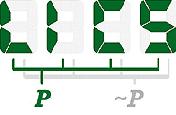Paper: Reactive Modules (at LICS 1996)
Authors: Rajeev Alur Thomas A. HenzingerAbstract
We present a formal model for concurrent systems. The model represents synchronous and asynchronous components in a uniform framework that supports compositional (assume-guarantee) and hierarchical (stepwise refinement) reasoning. While synchronous models are based on a notion of atomic computation step, and asynchronous models remove that notion by introducing stuttering, our model is based on a flexible notion of what constitutes a computation step: by applying an abstraction operator to a system, arbitrarily many consecutive steps can be collapsed into a single step. The abstraction operator, which may turn an asynchronous system into a synchronous one, allows us to describe systems at various levels of temporal detail. For describing systems at various levels of spatial detail, we use a hiding operator that may turn a synchronous system into an asynchronous one. We illustrate the model with diverse examples from synchronous circuits, asynchronous shared-memory programs, and synchronous message passing.
BibTeX
@InProceedings{AlurHenzinger-ReactiveModules,
author = {Rajeev Alur and Thomas A. Henzinger},
title = {Reactive Modules},
booktitle = {Proceedings of the Eleventh Annual IEEE Symp. on Logic in Computer Science, {LICS} 1996},
year = 1996,
editor = {Edmund M. Clarke},
month = {July},
pages = {207-218},
location = {New Brunswick, NJ, USA},
publisher = {IEEE Computer Society Press}
}
